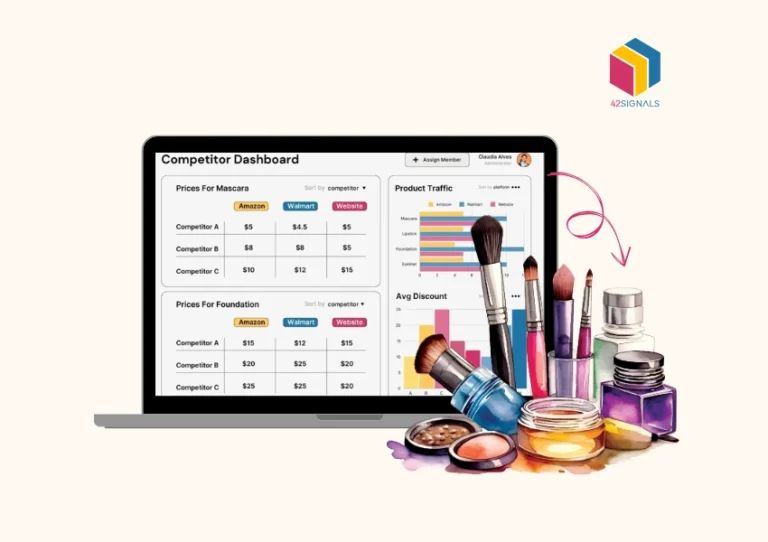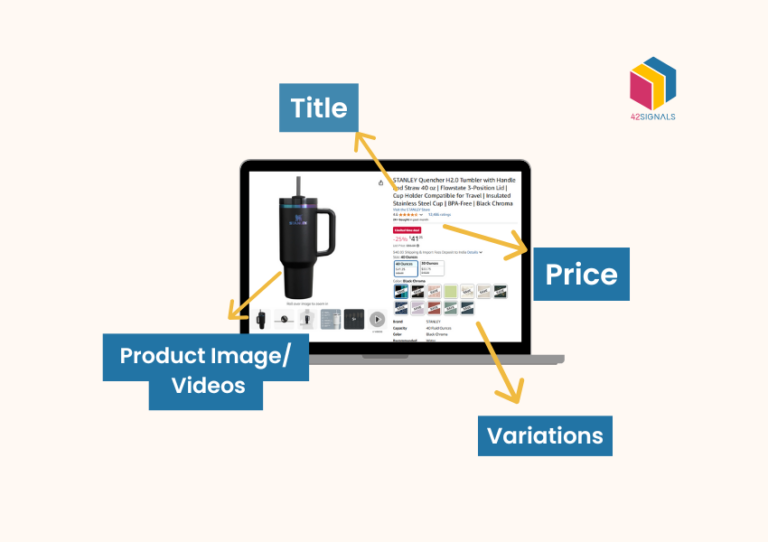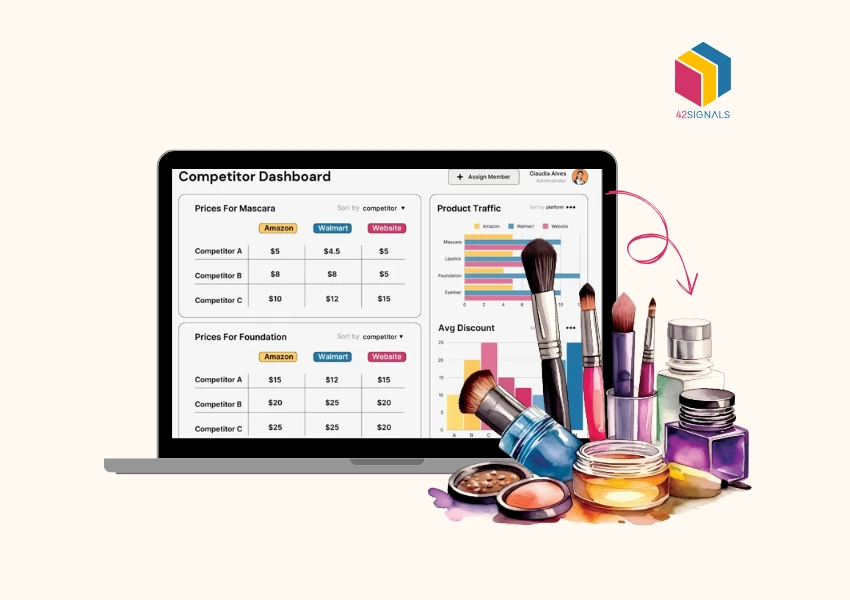In today’s era of digital commerce, where every click, purchase, and interaction leaves a digital footprint, the power of data analytics cannot be underestimated. It is the key that unlocks the potential for businesses to thrive in the online realm.
By delving into the wealth of data, we gain a deeper understanding of customer behavior, preferences, and trends. We can uncover hidden patterns, make accurate predictions, and tailor our strategies to meet the ever-evolving needs of our customers. In this blog, we embark on a journey to explore the limitless possibilities of data analytics and how it can be harnessed to drive remarkable e-commerce growth.
Role of Data Analytics in Driving Digital Commerce Growth
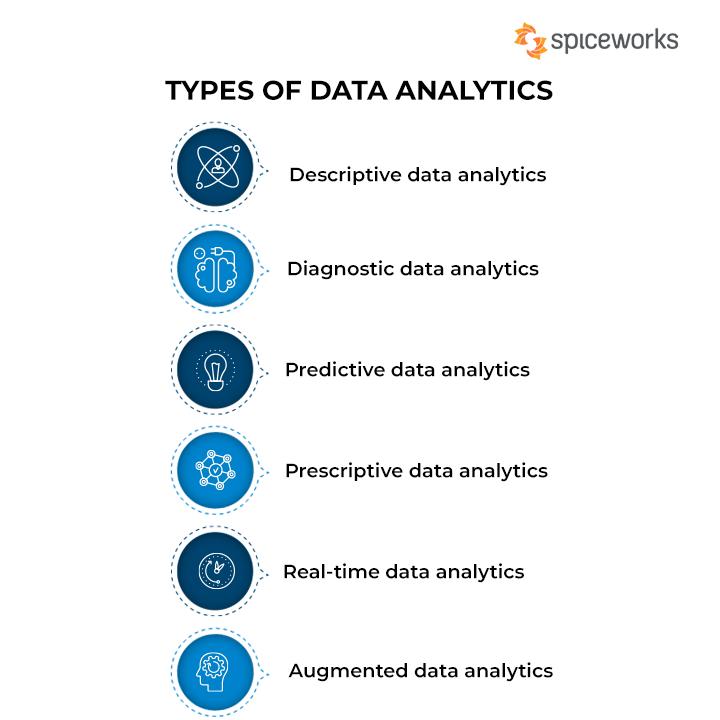
Image Source: Spiceworks
Today, when businesses compete fiercely for the attention and loyalty of customers, data analytics emerges as the superhero donning a cape of insights. It possesses the extraordinary ability to transform mere numbers and figures into actionable intelligence that fuels growth. Just like a skilled detective, data analytics uncovers the hidden mysteries of customer behavior, market trends, and untapped opportunities. It enables businesses to decode consumer preferences, decipher the secret language of conversion rates, and unveil the roadmap to digital commerce growth.
The power of data analytics can help businesses make strategic moves, unleashing a cascade of transformative actions that optimize marketing strategies, enhance customer experiences, and skyrocket revenue. It’s akin to having a crystal ball that not only predicts the future but also equips businesses with the knowledge to shape their destiny in the digital realm.
Defining Key Performance Indicators (KPIs)
Businesses embrace a strategic approach by defining Key Performance Indicators (KPIs) as guideposts for progress. These KPIs serve as a clear measure of success, delving deep into the core aspects of digital commerce.
Conversion rates, customer acquisition costs, average order value, and customer lifetime value are just a few KPIs that unveil the pulse of performance, offering valuable insights for growth.
Defining KPIs sets a destination on the e-commerce roadmap, enabling businesses to track progress, identify improvements, and make data-driven decisions. It empowers businesses to unlock potential, align efforts with objectives, and achieve remarkable digital commerce achievements. Join us on a journey where KPIs pave the path to success.
Collecting and Organizing Data for Effective Analysis
a. Collecting the Data:
Businesses face the challenge of collecting and organizing scattered information in the vast digital landscape. Web scraping, the art of extracting data from websites, offers a powerful solution. With automated tools, businesses can scrape product details, customer reviews, pricing information, and market trends from various online sources. This wealth of data, once gathered, can be organized systematically, enabling effective analysis. Web scraping revolutionizes data collection, providing businesses with rich datasets for comprehensive market understanding.
b. Organizing the Data:
After data collection, organizing, and structuring it becomes crucial for meaningful analysis. Data organization techniques such as cleansing, categorization, and normalization ensure accuracy and consistency. By establishing clear relationships between data points, businesses transform raw data into a structured dataset ready for analysis. Organized data acts as a foundation for data exploration, mining, and advanced analytics. It uncovers trends and insights that fuel decision-making and digital commerce growth. Effective data organization unlocks the potential of collected data, empowering businesses to make confident, data-driven decisions.
Utilizing Customer Data to Optimize Digital Commerce Strategies
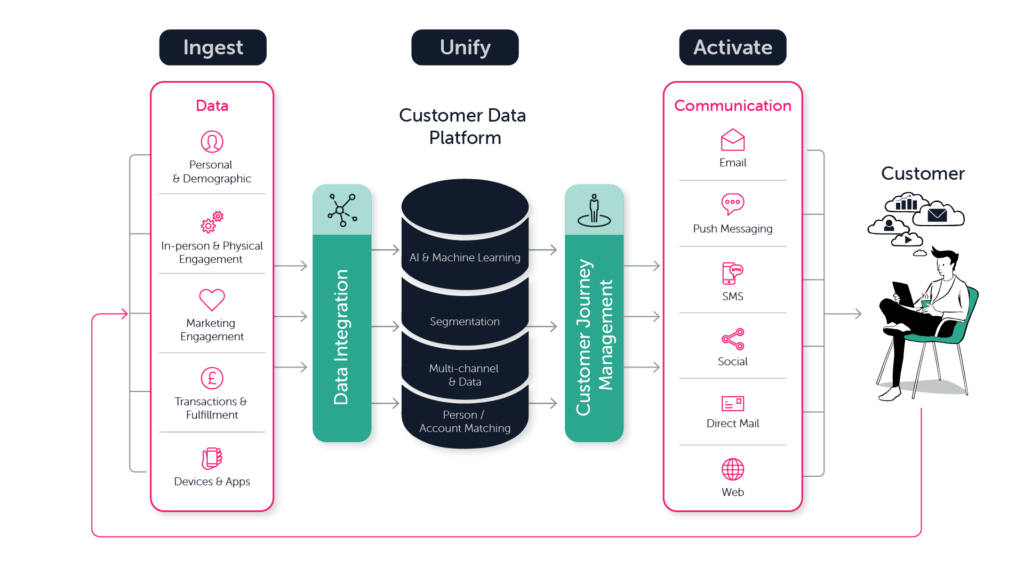
Image Source: Clever Touch
Utilizing customer data is vital for optimizing digital commerce strategies. By analyzing customer data, businesses gain valuable insights that drive targeted marketing, personalized experiences, and continuous improvement. Here are key ways to leverage customer data for success:
- Customer segmentation: Segment customers for tailored marketing and user experiences.
- Personalization: Deliver targeted recommendations, offers, and customized content.
- Behavioral analysis: Optimize website navigation and the overall customer experience.
- Predictive analytics: Forecast customer behavior for effective planning.
- Customer lifetime value (CLV): Prioritize acquisition, retention, and marketing efforts.
- Feedback and reviews: Gain insights and make informed decisions.
- Social listening: Monitor sentiment, perception, and trends for refined strategies.
- Testing and optimization: Improve elements based on data-driven insights.
- Customer retention and loyalty: Implement personalized retention strategies.
- Continuous improvement: Analyze data to track performance and optimize strategies over time.
The Role of Data Visualization in Understanding and Communicating Insights
Data visualization is a powerful storytelling medium, conveying complex data in an engaging and intuitive manner. Through charts, graphs, and infographics, it transforms raw data into a visual narrative that is easy to comprehend.
This enables businesses to identify trends, patterns, and correlations swiftly, facilitating informed decision-making. Additionally, data visualization transcends language barriers, making complex information accessible to diverse audiences.
Presenting data visually for digital commerce insights facilitates understanding, encourages discussions, and empowers businesses to make confident, data-driven decisions. It bridges the gap between data analysis and human perception, turning numbers into a compelling story that unlocks the true potential of data.
Implementing Data-Driven Decision Making for Continuous Improvement
Implementing data-driven decision-making is a transformative journey toward continuous improvement. It replaces reliance on instincts with factual information derived from thorough data analysis. With the help of data, businesses identify trends, uncover inefficiencies, and optimize strategies. It guides strategic planning, resource allocation, and performance evaluation.
Data-driven decision-making fosters a proactive approach, tracking metrics and adapting strategies. It brings objectivity and accountability, aligning choices with goals. Embracing data-driven decision-making empowers businesses to navigate the digital landscape confidently, driving continuous improvement and achieving new levels of success.
The Future of Data Analytics in Digital Commerce: Emerging Trends and Technologies
The future of data analytics with digital shelf analytics in driving e-commerce growth is characterized by the convergence of innovative technologies and evolving trends, enabling businesses to leverage data in unprecedented ways. Embracing these trends and technologies empowers businesses to gain a competitive edge, unlock opportunities, and drive success in the dynamic digital commerce landscape.
- AI and ML integration for advanced data analysis and decision-making.
- Real-time analytics for agile and informed decision-making.
- IoT data utilization for personalized marketing and enhanced customer experiences.
- Blockchain technology for transparent and secure data sharing, building customer trust.
- Enhanced data privacy and security measures to protect sensitive information.
- Predictive analytics for anticipating customer behavior and optimizing strategies.
- Data visualization for intuitive representation of insights.
- NLP for extracting valuable information from unstructured data sources.
- Cloud-based analytics platforms for scalable and efficient analysis.
- Integration of data analytics with CRM systems for holistic customer insights and personalized interactions.
Conclusion on Digital Commerce
Behavioral analysis optimizes the customer journey, while predictive analytics anticipates needs and informs decision-making. Feedback, social listening, and testing drive iterative improvements, and data-driven decision-making becomes the cornerstone of success. As emerging trends and technologies shape the future, embracing data analytics empowers businesses to thrive and shape the future of digital commerce.
Frequently Asked Questions
What is the meaning of digital commerce?
Digital commerce refers to the process of buying and selling goods and services using digital channels. It encompasses all aspects of online transactions, including marketing, payment processing, customer engagement, and order fulfillment.
Unlike traditional commerce, digital commerce leverages technologies like mobile apps, social media platforms, and online marketplaces to create seamless shopping experiences for customers.
What is the difference between eCommerce and digital commerce?
While eCommerce specifically focuses on the online buying and selling of goods and services, digital commerce takes a broader approach. Digital commerce includes not only online transactions but also the integration of marketing, data analysis, customer relationship management, and omnichannel experiences.
For example, digital commerce may involve personalized product recommendations, social media engagement, and subscription-based services, offering a more comprehensive approach to customer interaction and sales than eCommerce alone.
Is Amazon a digital commerce?
Yes, Amazon is a prime example of digital commerce. It operates as a robust platform for buying and selling products and services online, while also integrating advanced technologies like artificial intelligence, data analytics, and cloud computing. Beyond traditional eCommerce, Amazon encompasses digital commerce features such as personalized recommendations, subscription services like Amazon Prime, and even digital products like eBooks and streaming services, making it a leader in the digital commerce space.

